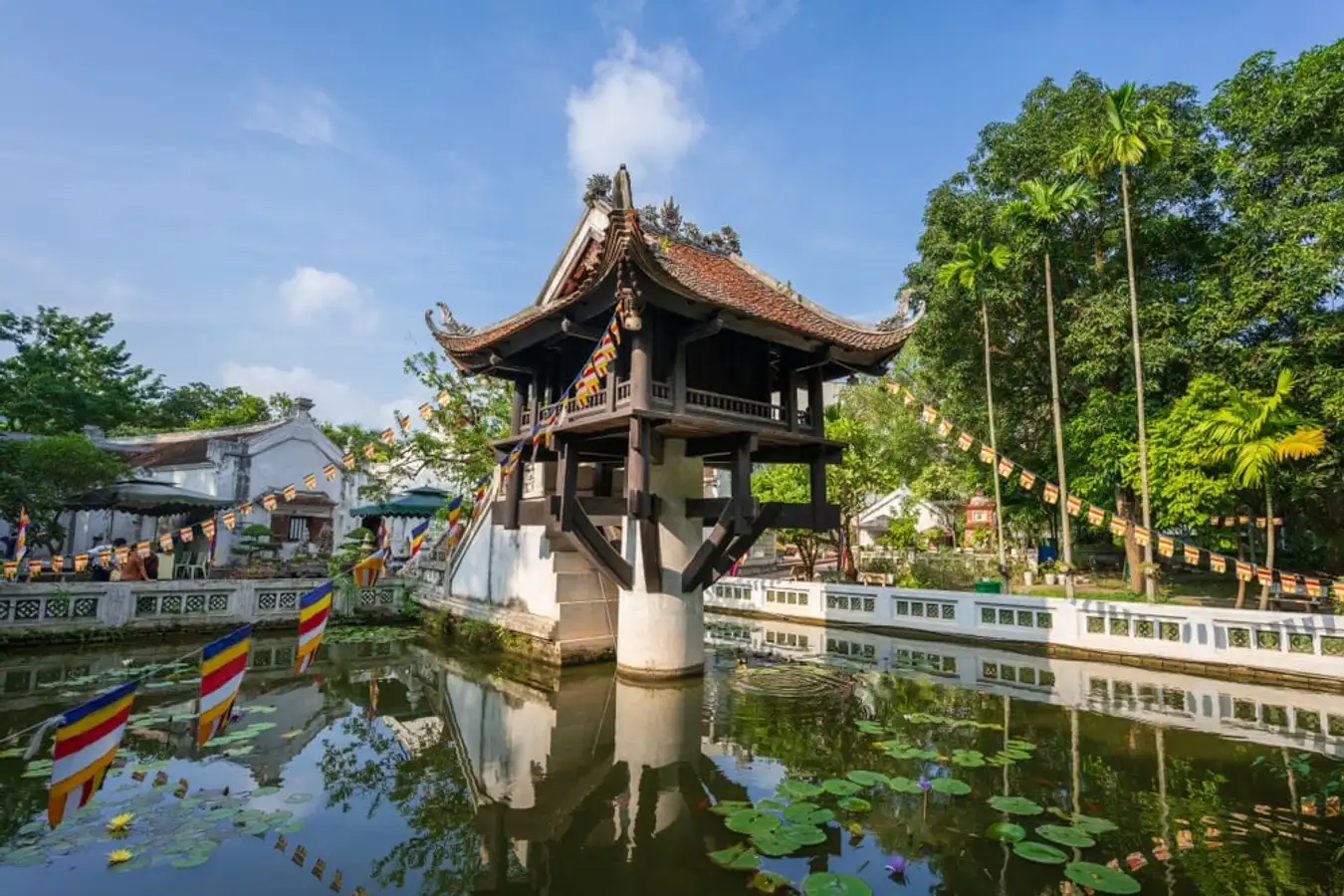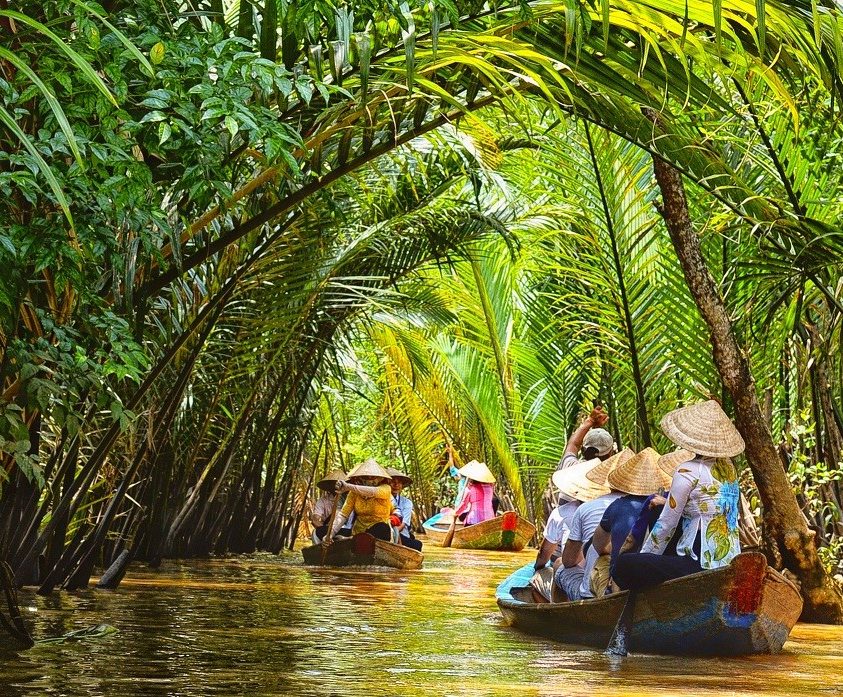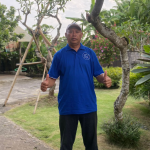Sapa: Everything you need to know in 6 key questions
Sapa is a picturesque town nestled in the northwest mountains of Vietnam, surrounded by breathtaking natural beauty. Its lush hills, terraced rice fields, and traditional ethnic minority villages attract thousands of travelers each year. The town is also famous for its cool year-round temperatures, providing a pleasant escape from the tropical heat in other parts of the country.
In this article, we’ll explore the must-see attractions and activities in Sapa, Vietnam, to help you plan your trip and make the most of your stay in this stunning region.
Where is Sapa, Vietnam?
Sapa, a quaint town in Lao Cai Province, lies in the northwest region of Vietnam. Located roughly 6 hours by car from Hanoi and about 9 hours from Ha Long Bay, Sapa sits beautifully in the Hoang Lien Son mountain range, which is home to the legendary Fansipan Peak—the tallest mountain in Vietnam and all of Indochina.
Perched at an elevation of approximately 1,600 meters, Sapa enjoys a mild climate throughout the year. Historically, it was favored by the French as a summer retreat in northern Vietnam. The town captivates visitors with its majestic mountains, stunning terraced rice fields, and the vibrant cultural traditions of its ethnic minority communities, making it a perfect destination for those seeking natural beauty and cultural exploration.

What to Do and See in the Center of Sapa?
Hiking in the Heart of Nature
When you first arrive in Sapa, start your exploration with simple activities like a leisurely walk around the town center. You can visit the old stone church, also known as the Sapa Stone Church, built in 1895. This church is considered one of the best-preserved examples of French colonial architecture in the area.
Next, head to Ham Rong Mountain, where you’ll be treated to panoramic views of Sapa, the Muong Hoa Valley, and the villages of Sa Pa and Ta Phin shrouded in mist. The mountain is located just 3 km from Sapa town, easily accessible by foot.

Conquer Fansipan: The Roof of Indochina
Climbing Fansipan is a thrilling adventure for nature enthusiasts and adventure seekers. As the highest peak in Indochina at 3,143 meters, it offers stunning panoramic views of the Muong Hoa Valley and the surrounding mountains.
Location: 9 km southwest of Sapa town.
The journey to the summit of Fansipan can be taken by cable car for those seeking a quicker experience, or by hiking for the more adventurous. The hike typically lasts two days and one night, leading you through picturesque mountain trails, traditional tribal villages, and breathtaking

Staying with Locals
During your trip to Sapa, don’t miss the chance to spend a night with a local family. This unique experience offers a deep dive into the local culture, allowing you to discover traditional customs, foods, and way of life in an authentic setting.
Families from ethnic groups such as the Hmong, Dao, Tay, and Giay, renowned for their legendary hospitality, will warmly welcome you into their traditional homes. Preparing dinner together and sharing the meal will be unforgettable moments during your hike in Sapa.

Cat Cat Village
Cat Cat Village is located in the scenic Muong Hoa Valley, just 3 kilometers from the center of Sapa. As a Hmong village, it’s easily accessible and a great option for travelers who prefer a short walk. However, being the closest village to Sapa and easily reachable, it attracts many tourists, which can sometimes make it feel less authentic compared to the more remote villages nearby.

What to Visit Around Sapa?
Within a 15 km radius from Sapa, you’ll find picturesque mountain areas, far from the hustle and bustle of the city. Here, you can explore the stunning beauty of nature with majestic rice terraces and ethnic villages.
Ta Phin Village
Located about 15 km east of Sapa, Ta Phin is known for its breathtaking natural landscapes and the rich cultural heritage of the Red Dao people, particularly their brocade craftsmanship. The journey to Ta Phin will take you through some of the region’s most beautiful terraced rice fields. Once there, you can wander through the village and discover the local tradition of brocade weaving, where silk fabric is decorated with gold or silver threads.

Ta Van Village
About 10 km from Sapa, Ta Van is nestled in a magnificent setting of terraced rice fields. This village is a popular stop for trekkers, who often spend the night in traditional Hmong, Dao, or Giay houses equipped with hot showers, mattresses, and mosquito nets. After a warm evening with your hosts, you can either return to Sapa or continue your trek through some of the most spectacular landscapes in northern Vietnam.
Traditional Ethnic Markets in Bac Ha
Although Bac Ha is about 100 kilometers from Sapa, the journey is well worth it. The winding road through hills and valleys offers stunning views of cascading rice terraces and traditional villages nestled in the mountains.
Bac Ha is home to several fascinating ethnic markets. These open-air markets are formed by early arrivals, and there is no formal entry. The ethnic minorities in the region often travel for hours on foot or by scooter to reach Bac Ha before dawn to sell their goods.

At the Coc Ly Market, you can find a variety of colorful goods, from food to clothing and textiles. It’s a true festival of colors and a unique opportunity to interact with the locals. To fully appreciate the traditional costumes that distinguish the different ethnic groups, it’s best to arrive early. After 10 a.m., the market loses some of its liveliness.
How to Get to Sapa?
It’s important to note that there is no direct train to Sapa itself; the train service ends at Lao Cai Station, the nearest station to Sapa. From Lao Cai, you’ll need to take additional transport to reach Sapa, such as a car, taxi, or motorbike.
Hanoi to Lao Cai by Train
There are two night trains connecting Hanoi to Lao Cai (SP1 and SP3), with additional services during peak travel periods. The trains offer two types of carriages: the regular ones operated by Vietnam Railways and the premium sleeper carriages operated by private companies. The stations are located in Hanoi and Lao Cai, with specific schedules for each train. The fares vary depending on the class, with an average price of around $32 USD.
Train Stations:
- Hanoi Station: 120 Le Duan Street, Hoan Kiem, Hanoi
- Lao Cai Station: Khanh Yen, Pho Moi, Lao Cai
For booking train tickets online in Vietnam, it’s recommended to visit the official Vietnam Railways website at https://dsvn.vn/. After arriving at Lao Cai, you can easily reach Sapa via bus, hotel shuttle, taxi, or motorbike taxi.

Hanoi to Sapa by Bus or Sleeper Bus
Taking the bus is the fastest way to travel from Hanoi to Sapa, with the journey taking between 5 to 6 hours thanks to a newly built highway. You can ask your hotel to help with booking your bus tickets.
Buses to Sapa typically depart from Hanoi’s main bus stations, such as the My Dinh Bus Station or the Gia Lam Bus Station, with the majority of services leaving in the early morning or late afternoon. Depending on your bus operator, the departure point and schedule may vary, so it’s best to check the details in advance.
Once you arrive in Sapa, the bus will typically drop you off at the central bus station, located not far from the town center. From there, it’s easy to take a short taxi ride or walk to your accommodation, depending on where you’re staying.
Private Car
For a hassle-free trip to Sapa, consider booking a private car through a travel agency. Many agencies offer complete packages that include round-trip transportation, making it a convenient and recommended option.
These are the best ways to travel to Sapa from Hanoi, located in northern Vietnam. If you’re traveling from the south (Ho Chi Minh City) or central Vietnam (from Da Nang), you will first need to get to Hanoi, and then follow the directions provided above to reach Sapa.

What Is the Best Time to Visit Sapa?
Like the rest of northern Vietnam, Sapa experiences four distinct seasons, with an average annual temperature of 15°C. Temperatures can rise to 30°C during the warmer months and drop below 0°C in the colder ones.
Winter (December to February): Winters in Sapa are chilly, with some days feeling freezing cold. The terraced rice fields lie fallow, and January and February often bring heavy fog, creating a mystical but overcast atmosphere.
Spring (March to late May): Spring brings increasing sunshine and pleasant temperatures. By early May, the rice planting season begins. This is one of the most beautiful times to visit Sapa, as the weather is cool and fresh, and vibrant blossoms cover the landscape.
Summer (June to September): Summers in Sapa are warm and wet, with June and July seeing the heaviest rainfall. However, August and September are ideal for exploring the stunning golden rice terraces. Late August and early September mark the harvest season, offering a chance to enjoy Sapa’s breathtaking scenery and experience the local culture tied to rice farming.
Autumn (October to late November): Autumn sees a return of sunny days as the rain tapers off. While it is no longer the season for rice fields, the clear skies and cool weather make it a great time for trekking and visiting ethnic villages, where you can interact with the locals and learn about their way of life.

Tips for a Successful Trip to Sapa
When visiting Sapa, there are a few things to keep in mind to ensure a smooth and respectful experience, especially when interacting with local communities or capturing the beauty of the region.
Taking Photos Respectfully:
When photographing, it’s essential to be discreet to avoid disturbing the peaceful atmosphere of local markets and villages. Rather than taking long shots or repeatedly aiming your camera at individuals, consider capturing the essence of the surroundings without invading personal space. The locals in Sapa, especially women, may feel uncomfortable with frequent or invasive photography. It’s best not to ask for permission to take photos, as language barriers could make it challenging and potentially lead to misunderstandings. Always aim to respect their privacy while enjoying the visual beauty of the area.
The Thang Long Water Puppet Theater, located near Hoan Kiem Lake, offers convenient access to this unforgettable spectacle. Witnessing a water puppet show is a fantastic way to immerse yourself in Vietnam’s rich cultural traditions.

Respectful Behavior
The local people of Sapa are known for their gentle demeanor. There’s no violence or theft in the region, and courtesy remains vital to maintaining the calm, welcoming atmosphere. Always approach the locals with respect, and avoid actions that could disrupt the peaceful vibe of the market or villages.

Dress Appropriately
Given Sapa’s high altitude and unpredictable weather, it’s essential to dress comfortably yet modestly. The weather can shift from warm to chilly, with the possibility of rain or strong winds. Opt for lightweight clothing that allows your skin to breathe, while also packing a jacket, scarf, and gloves to stay warm during colder spells. Comfortable shoes are also a must, especially if you plan to explore the area on foot.
Organizing Your Stay
If you’re planning to spend 2 or 3 days in Sapa and want to make the most of your time, we can help you plan an itinerary tailored to your interests. Whether you want to explore the local markets, hike the surrounding mountains, or experience the culture of Sapa’s ethnic groups, we can provide detailed routes to ensure you don’t miss out on the area’s hidden gems.
By following these guidelines, you can have an enriching and respectful travel experience while enjoying all that Sapa has to offer.
Learn more

Thanh Nam Nguyen
Born in Ho Chi Minh City with Vietnamese-American roots, Thanh Nam Nguyen is passionate about adventures and traveling in Indochina. As a local guide for All Vietnam Senses, he leads tours in southern Vietnam, Cambodia, and Thailand, sharing his knowledge with travelers and inspiring readers to explore the region. Leave a comment below for him to respond directly!














